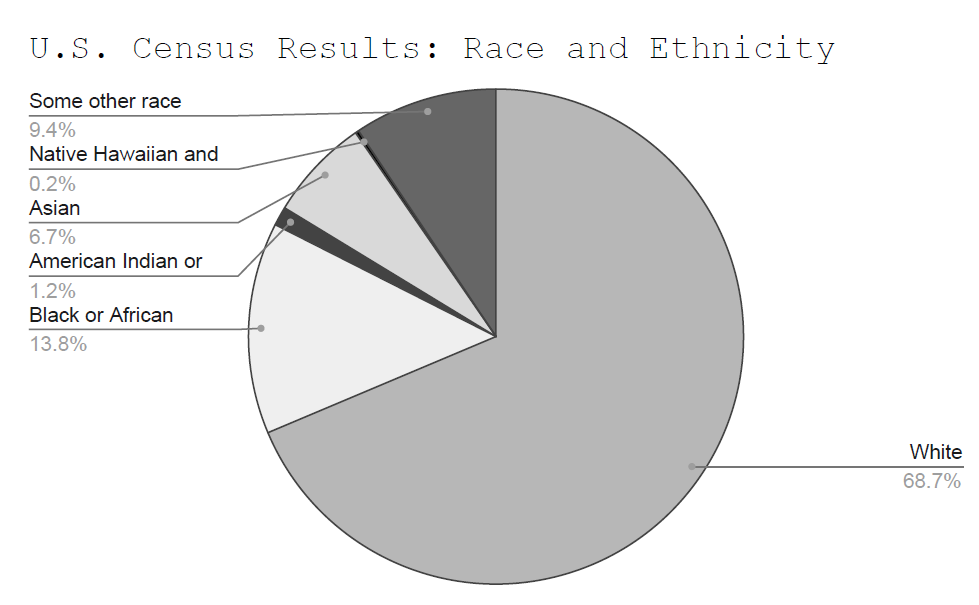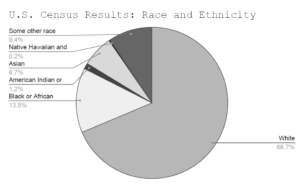Latinx Are Left Out as ‘Some Other Race’

by Timaya Pulliam ‘23
 The 2020 U.S. Census data shows a lack of care and respect for the Latinx community. The only options for people to select in the race category of the Census are, white, Black/African American, American Indian and Alaska Native, Asian, Native Hawaiian and other Pacific Islander, two or more races, and some other race. Under a different question about origin (which is in the category of heritage, nationality, lineage, or country of birth of the person or the person’s parents or ancestors), ‘Hispanic’ is listed as one of many options.
The 2020 U.S. Census data shows a lack of care and respect for the Latinx community. The only options for people to select in the race category of the Census are, white, Black/African American, American Indian and Alaska Native, Asian, Native Hawaiian and other Pacific Islander, two or more races, and some other race. Under a different question about origin (which is in the category of heritage, nationality, lineage, or country of birth of the person or the person’s parents or ancestors), ‘Hispanic’ is listed as one of many options.
Leani García Torres told NPR that it was easy to mark the “yes” box to the question about her being of Hispanic, Latino, or Spanish origin. However, when asked about her race, Torres said, “It does raise a little bit of anxiety … I don’t know what to put,” She’s never considered herself a part of any of the groups described in the racial section of the Census, as her parents are both from Puerto Rico and she just thinks of herself as tan. This prompted Torres and many like her to select the “some other race” description when filling out the data collector.
The “some other race” category grew by 129 percent, which is 49.9 million people in the 2020 Census. A large portion of this group is a part of the Latinx population, as they could not select anything else to represent themselves. The actual races of those who pick “some other race” are unidentifiable, causing every single one of them to be left out of any governmental data about race taken from the Census.
With this, it needs to be recognized that not every Latinx person is of the same race or color. The answer that Latinx people give for the race question on the Census largely can be based on how they self-identify. One problem with the Census is that it limits how people are able to identify themselves, causing them to not be represented in government data in such areas as health, social mobility and equity, socioeconomic status, and others.
Misrepresentation is even more prevalent when speaking about racial justice. If different groups of people continue to be falsely represented, they will continue to be falsely seen and heard. People shouldn’t have to fit into one box that the U.S. government wants to put them in.
It is not surprising that a large group of people are unrepresented or feel misrepresented in the “land of the free” and “melting pot” of different people and places. The United States of America is a country that has always struggled with racism and xenophobia. While more attention is being called towards these discriminatory behaviors today, it does not mean that the issue of the Latinx community being misrepresented or neglected is something new.
As the U.S. Census Bureau prepares for the 2030 Census, new and improved categories may better represent the Latinx community. New questions about race, culture, and ethnicity should be asked so no one is left out of future data. The Census could potentially combine the heritage and race questions where citizens can choose more than one answer to describe themselves. This would give Latinx people a chance to answer the question without being omitted from the data. If unity, freedom, and equality are as important as American citizens preach them to be, the country’s data needs to depict these characteristics.